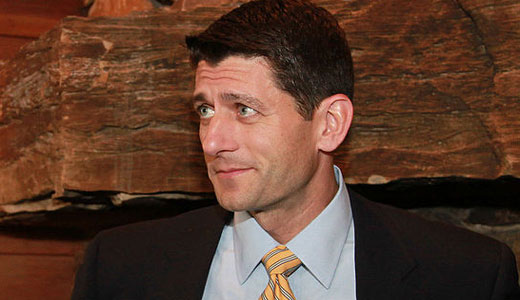
Paul Ryan’s home state, Wisconsin, could lose billions of dollars if Ryan gets into the White House and Republicans take control of Congress.
That was illustrated this week when the U.S. Fish and Wildlife Service announced that Wisconsin will receive more than $800 million federal dollars to promote conservation and endangered species preservation. It is part of $33 billion in grants to 21 states, announced Aug. 14, to support conservation planning and acquisition of vital habitat for threatened and endangered fish, wildlife, and plants.
Ryan’s budget would slash all so-called discretionary spending, including such environmental funding as well as education, health, transportation infrastructure, and public safety programs.
Wisconsin received $61.3 billion in federal funds in federal fiscal year 09 (Oct. 1, 2008, to Sept. 30, 2009), according to the state’s Wisconsin Federal Funds website. “This amounts to $10,837 per person,” the state website says.
“Wisconsin’s share of federal funding grew at a rate well ahead of the national average,” the state boasts.
Wisconsin – also famous for its anti-“big government” governor, Scott Walker – has benefited greatly from federal spending.
The state website notes, “The federal government purchases millions of dollars in goods and services from Wisconsin businesses every year.”
In fiscal year 2009, federal procurement spending in Wisconsin “increased significantly, as Wisconsin businesses received 112 percent more dollars in 2009 than the previous year,” the state gloats. “This is impressive, as federal spending for procurement nationwide increased 29.5 percent. In total, the federal government spent $9.5 billion on goods and services in Wisconsin.”
Wisconsin also realized “a dramatic increase” in federal grant dollars, receiving $19.2 billion in fiscal year 09, compared to $8.4 billion in the previous year – a 123 percent increase.
Under President Obama’s 2009 stimulus measure, the American Reinvestment and Recovery Act, Wisconsin received more than $1.6 billion in K-12 and higher education funding. It received $734 million for transportation and infrastructure, $219 million for energy, $172 million for environmental programs, $92 million for health care, $73 million for workforce programs, $67 million for housing and economic development, and $25 million for public safety.
Ryan opposed the stimulus. “Temporary stimulus does not work,” he said at the time on CNBC. “It does not give businesses confidence to invest in jobs and capital for the future. It’s just sort of sugar-high economics.”
However the state estimates that over 70,000 jobs have been created or retained in Wisconsin by the federal stimulus money.
After slamming the stimulus as a “wasteful spending spree,” Ryan himself wound up begging for stimulus grant money for two Wisconsin energy companies, saying it would help his state create thousands of new jobs, save energy, and reduce greenhouse gas emissions.
Ryan, in another flip-flopper action, favored using federal money to bail out banks. Explaining his 2009 vote for the federal Troubled Asset Relief Program to bail out the financial industry, Ryan said that though it violated his principles, it was necessary to prevent a banking crisis that would hurt his hometown, Janesville, Wis., NPR reports.
“Why does that matter to us? Why does that matter to Janesville, Wis.?” Ryan asked at the time. “If it goes the way it could go, that means credit shuts down, businesses can’t get money to pay their payroll to pay their employees, students can’t get student loans for next semester, people can’t get car loans, seniors may not have access to their savings.”
Ryan’s family fortune was made with the help of federal funds.
His budget plan, however, would badly hurt his own congressional district, which has received hundreds of millions of dollars in “discretionary” federal funds.
Ryan’s district encompasses Walworth, Kenosha, and Racine Counties, and also extends north to include communities in southern Waukesha and Milwaukee Counties. As of March 31, 2012, state agencies in Kenosha County, with a 10.3 percent unemployment rate – one of the highest in Wisconsin – received $129 million in federal stimulus funds for things like education, roads and bridges, dislocated worker programs, vaccines for children, and programs for infants and toddlers with disabilities. Racine County received close to $94 million for similar purposes. Walworth received $39 million. Waukesha and Milwaukee Counties overall received more than $650 million.
Every county in Wisconsin relies on the same types of federal funding. The cost of putting this Wisconsin congressman in the White House could be punishing for the Badger State. And Wisconsin is just one example of the harsh impact Ryan’s budget could have in every state in the U.S.
Photo: Wikimedia Commons










